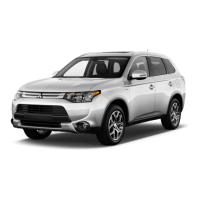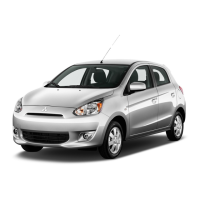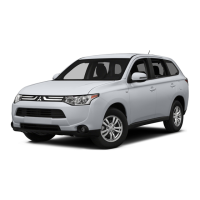Starting the engine
5-46 Features and controls
5
Do not operate the starter motor continu-
ously for longer than 15 seconds as this
could run the battery down or damage the
starter motor. If the engine does not start,
turn the ignition switch back to the “OFF”
position, wait a few seconds, and then try
again. Trying repeatedly with the engine
or starter motor still turning will damage
the starter mechanism.
If the engine will not start because the bat-
tery is weak or discharged, refer to
“Jump-starting the engine” (on page 8-2)
for instructions.
A longer warm up period will only con-
sume extra fuel. The engine is warmed up
enough for driving when the bar graph of
engine coolant temperature display starts
to move. Refer to “Interrupt display
screen (With ignition switch or operation
mode in ON)” on page 5-93.
This model is equipped with an electronically
controlled fuel injection system. This is a sys-
tem that automatically controls fuel injection.
There is usually no need to depress the accel-
erator pedal when starting the engine.
The starter should not be run for more than 15
seconds at a time.
To prevent battery drain, wait a few seconds
between attempts to restart the engine.
1. Make sure all occupants are properly
seated with seat belts fastened.
2. Insert the ignition key.
3. Make sure the parking brake is applied.
4. Press and hold the brake pedal down with
your right foot.
5. Press and hold the clutch pedal all the way
down (manual transaxle).
6. On vehicles equipped with manual trans-
axle, place the gearshift lever in the “N”
(Neutral) position.
On vehicles equipped with continuously
variable transmission (CVT), make sure
the selector lever is in the “P” (PARK)
position.
7. Turn the ignition switch to the “ON” posi-
tion and make certain that all warning
lights are functioning properly before
starting the engine.
8. Turn the ignition switch to the “START”
position without pressing the accelerator
pedal. Release the key when the engine
starts.
Tips for starting

